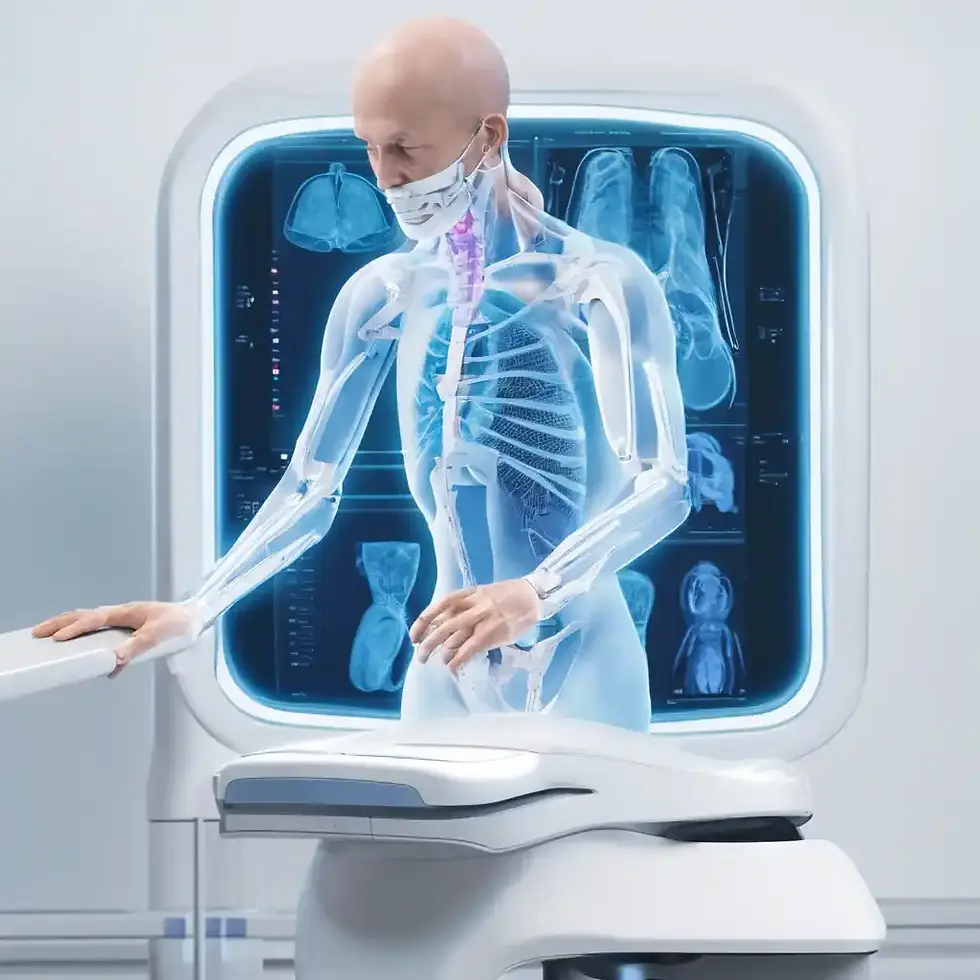Tech vs. Skill Gaps in Diagnostic Imaging: The Divide Grows
- Samar Qureshi

- Apr 12, 2024
- 3 min read
Updated: May 19

The field of diagnostic imaging is currently experiencing a revolution. With advancements in technology such as artificial intelligence, digital imaging, and the Internet of Things, the diagnosis and treatment planning process are becoming increasingly precise, efficient, and integrated with other medical disciplines. However, these rapid changes aren't seamlessly translating to widespread professional development among the diagnostic imaging workforce. This article aims to dissect this profound shift, from the lightning pace of technological gains to the persistent skill gaps. It provides an insightful read for diagnostic imaging professionals struggling to bridge this divide.
1. The Advent of Artificial Intelligence in Radiology
AI's pervasive impact in radiology cannot be overstated. From image recognition to predictive analytics, AI has shown remarkable promise in improving diagnostics, potentially reducing errors and enhancing patient outcomes. But what does this mean for the human professionals operating alongside this technology?
2. Understanding the Fear of Replacement by Machines
It's a common sentiment among technologists that AI and automated imaging will render their skills obsolete. This fear is valid, yet it's essential to reframe the conversation. The focus should shift from replacement to augmentation, exploring how these technologies can enhance the capabilities of human professionals, not eliminate them.
3. The Realities of Continuous Learning in a High-Tech World
Continuous professional development has never been more critical. Diagnostic imaging technologists must recognize the necessity to stay on the cutting edge. This includes understanding new software and devices, as well as honing soft skills that will remain cornerstones of effective healthcare delivery.
4. Ensuring a Synergy Between Technology and Human Interaction
While technology is often the focal point, the importance of human interaction cannot be overstated. Patients still need the empathetic care that only a skilled technologist can provide. The challenge is to integrate technological advancements in a way that enhances rather than hinders this crucial aspect of the healthcare experience.
5. Shaping Curriculums to Reflect Modern Realities
Educational institutions must evolve to meet the needs of the contemporary diagnostic imaging sector. This involves not just updating curriculums with the latest technology but also instilling a mindset of lifelong learning that can serve professionals well as they encounter new tools throughout their careers.
6. The Role of Mentorship in Facilitating Knowledge Transfer
Mentorship and on-the-job training are invaluable in passing down nuanced skills and institutional knowledge. Instituting robust mentorship programs can help to bridge the gap between experienced technologists and those just entering the field, ensuring that critical skills and insights are not lost to rapid technological turnover.
7. Leveraging Industry Partnerships for Training Opportunities
Collaboration between healthcare facilities, technology companies, and educational institutions can provide unique training opportunities. Through these partnerships, technologists can gain direct exposure to new equipment and software, as well as the chance to participate in the development and testing of these tools.
8. Recognizing and Addressing Equity in Access to Training
Training opportunities must be made accessible to all diagnostic imaging professionals, not just those in metropolitan or major academic medical centers. Strategies such as online courses, digital simulations, and mobile-based learning platforms can help bridge the gap, offering scalable training options that reach professionals at every level and location.
9. Government and Legislative Support for Technologist Up-Skilling
Policymakers play a crucial role in advocating for the value of continued technologist education and in developing frameworks to support this. Legislative support can take the form of funding for research and training programs, accrediting relevant courses, and creating tax incentives for healthcare institutions that invest in their technologists.
10. The Personal Responsibility in Staying Competitive
Finally, professionals themselves need to feel empowered to take ownership of their learning and development. This involves seeking out resources, staying informed about the latest trends and technologies, and actively pursuing opportunities for growth, even when it feels overwhelming or the end seems too far.
Understanding and addressing the widening gap between technological advancements and the skills of diagnostic imaging technologists is not just a matter of professional competitiveness. It is a fundamental aspect of ensuring the continued high-quality care and diagnosis that patients rely on. By exploring these challenges and offering potential solutions, we can work towards a future where healthcare professionals and cutting-edge technology complement one another to achieve the best possible outcomes for patients.



Comments